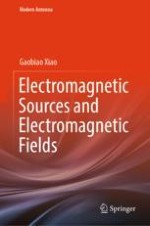2024 | Buch
Über dieses Buch
This book presents a modified spherical harmonic expansion method in which the electromagnetic fields and their sources are expanded with the same set of spherical vector basis functions in a similar procedure. Explicit expressions for the electromagnetic fields, potentials, energies, and the related Green’s functions are derived for the spherical modes in both frequency domain and time domain. Based on the formulation, the relationships between the electromagnetic sources, the electromagnetic far fields, and the electromagnetic near fields are clearly revealed. In particular, a nonuniform transmission line model is developed for intuitively characterizing the total radiation process. The introduction of the cutoff radius and the cutoff mode degree provides a simple reference for determining the numbers of degrees of freedom of the fields associated with sources in a bounded region. Based on the theory, an efficient hybrid method for synthesizing antenna arrays with complex footprints is proposed and demonstrated with several numerical examples. Effective algorithms are also developed for reconstructing the radiating part of the current sources.
This book is intended for researchers, engineers, and graduate students who are interested in studying the energy transfer in electromagnetic radiation, synthesis and measurement of antenna arrays, and applications of inverse electromagnetic source problems.
Anzeige
